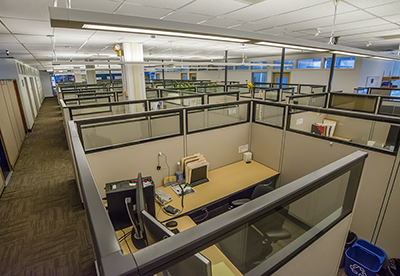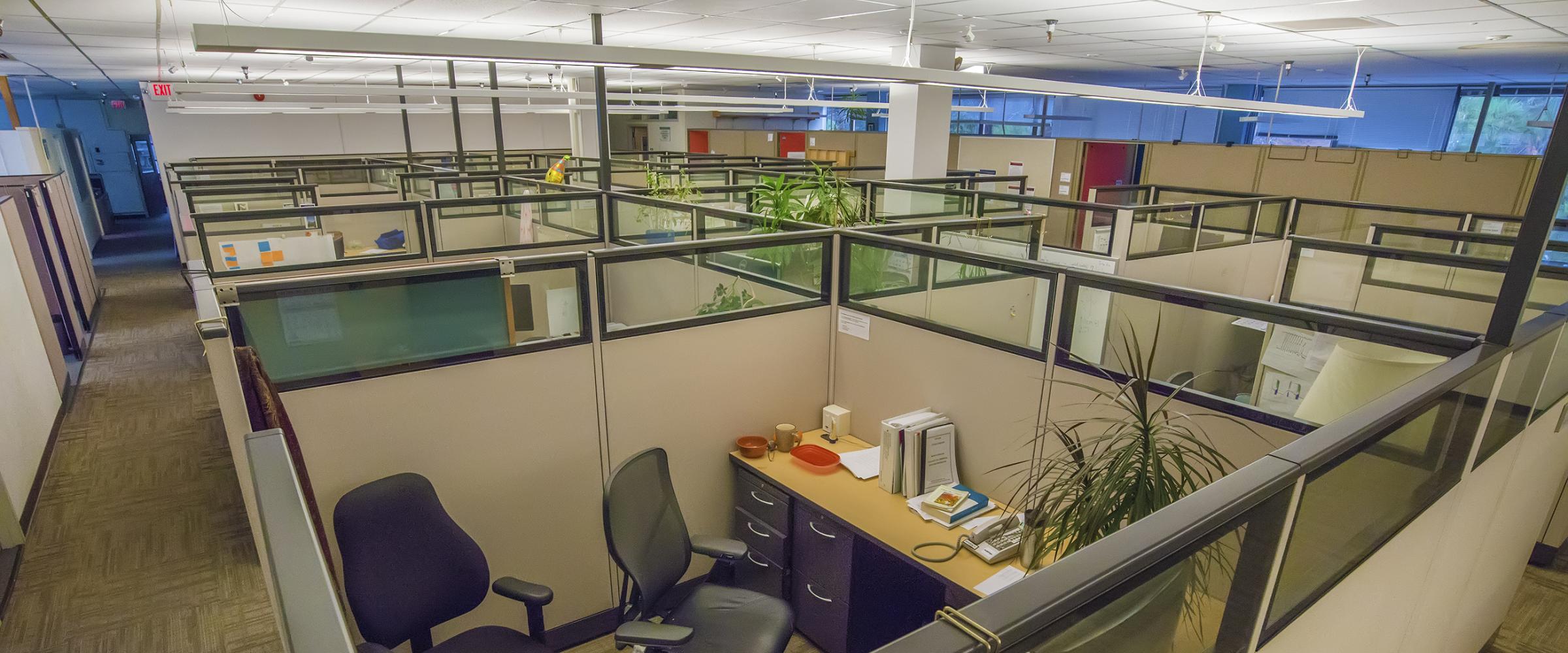Automated Fault Detection for Lighting Systems

The Challenge: Ensuring Lighting Controls Are Worth the Investment
It is well documented that controls that automatically adjust lighting as needed save energy and money. Scheduling alone could save the commercial building sector tens of trillions of Btus and billions of dollars in energy costs each year. But 70 percent of commercial buildings don’t use any controls. Building owners and operators remain unconvinced of their value. And they don’t know how to make sure automatic lighting control systems are working properly – or delivering the savings they promise.
The Solution: FLEXLAB®
With funding from the Department of Energy Building Technologies Office, Berkeley Lab researchers devised an experiment to show that open-source algorithms can provide the tools needed to monitor a building’s lighting
control systems, make sure they’re performing as they should, and quantify a given building’s energy savings. They developed open-source algorithms to conduct fault detection and diagnostics (FDD) and continuous savings measurement and verification (M&V) for lighting control systems. The U.S. Department of Energy's FLEXLAB® facility at Lawrence Berkeley National Laboratory (Berkeley Lab) Lighting and Plug Load Testbed provided a realistic, occupied office environment that also features the ability to configure diverse control strategies and physical control zones.

The Bottom Line: Lighting Controls Can Be Continuously Monitored to Ensure Energy- and Cost-saving Benefits
- The experiment focused on schedule-based lighting controls, which can save 5 to 15 percent of lighting energy use compared to a no-controls baseline. Automating lighting based on expected times of building occupancy saves energy. Occupant sensors and/or override switches can ensure flexibility.
- The experiment proved that automated measurement and verification can show building owners and operators exactly how much energy lighting controls are saving them – and can do it automatically, on an ongoing basis.
- The experiment showed that open-source algorithms for FDD and M&V can reliably tell when a lighting-control system isn’t working as it should, giving building owners and operators clear guidance for making adjustments and enabling even greater energy savings.
- These algorithms can be readily adopted for inclusion in existing commercial lighting control solutions, or can be implemented using the Department of Energy’s open-source VOLTTRON™ platform.
Download the full case study here: Automated Fault Detection for Lighting Systems
"The configurability of physical control zones and lighting control strategies that FLEXLAB offers is unparalleled."
Jessica Granderson, Berkeley Lab, Staff Scientist
